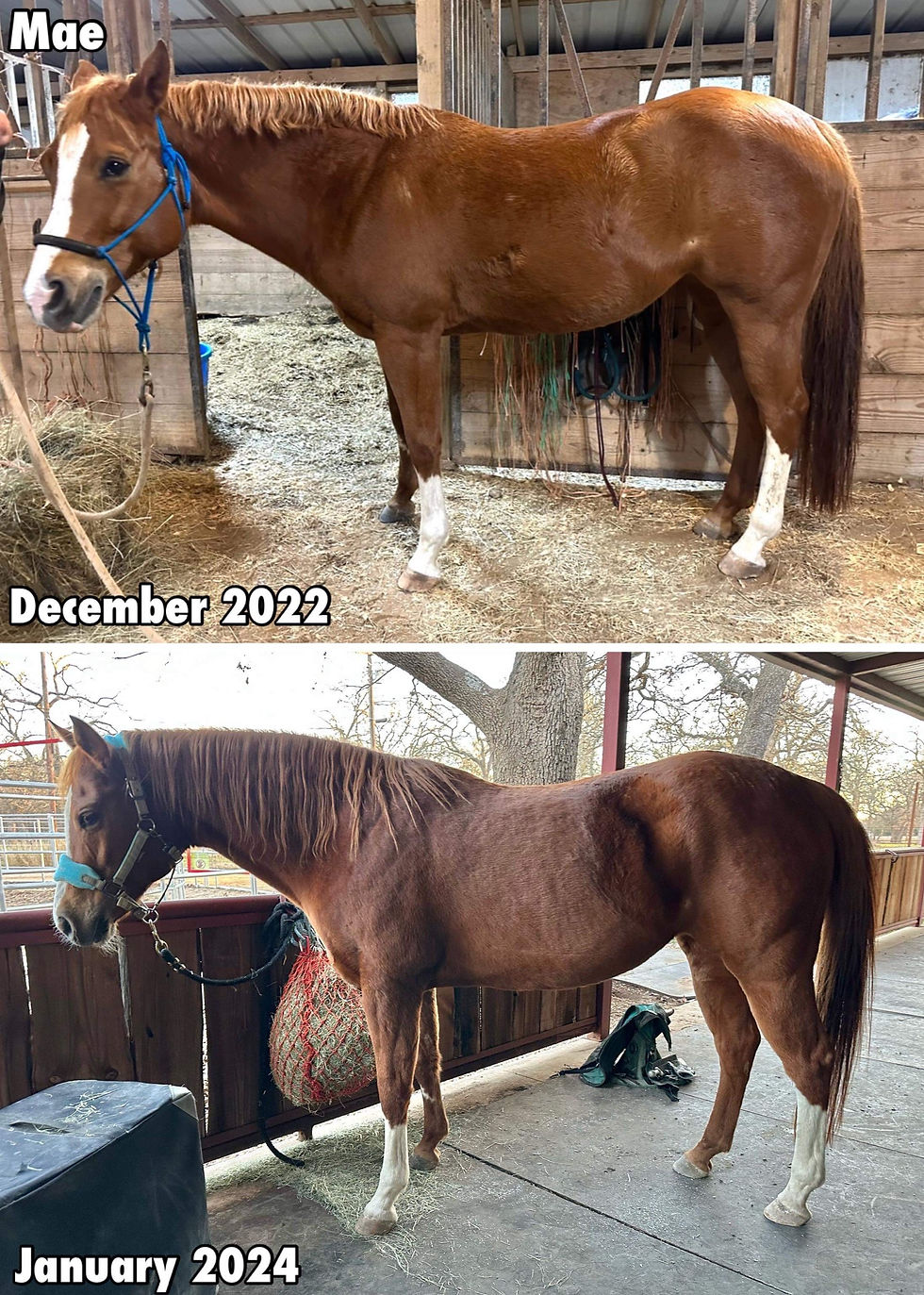Wisdom Wednesday
- Tarrin Warren

- Jan 17, 2024
- 2 min read
Lame is not the same as limping. By the time a horse is visibly limping they have likely been lame for awhile. (Unless it is an abscess or acute/catastrophic injury).
Horses are masters at hiding pain because they are prey animals. Injured animals are dinner for another animal.
Early lameness is usually identified through irregular rhythm in movement, dysfunctional posture, abnormal hoof wear patterns, behavioral issues, body tension, among other things. Many of these issues are easily written off as training, mood, temperament, poor hoofcare professional, etc. While those can be factors, when you are having more than one symptom, you are probably dealing with an underlying lameness.
Body lameness often occurs prior to limb lameness. Limb lameness usually happens after body lameness has been occurring for a period of time. The hind end lameness generally starts prior to the limping we see in the front limbs. The front limbs have been abused by compensating for the hind end dysfunction. We get head bobbing, limping with front end lameness. Hind end lameness may not be as obvious especially because is generally starts higher up in the body. A horse that is lame in all 4 quarters can look sound to an uneducated eye because all 4 quarters are compensating equally. Many horses that are body lame or lame in all 4 quarters are often passed off as sound to unsuspecting individuals. Even some veterinarians that do not specialize in lameness and sports medicine will miss early sign of lameness.
The more advanced the lameness is, the more expensive it is to treat and rehab. Preventing lameness or catching it early will save a lot of money in the long run.






Comments